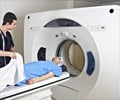A new study by neuroscientists at Rush University Medical Center has pointed out that, MRI scans of those at risk of developing Alzheimer's disease portray structural changes in the brain.

"One of the main challenges in the field of Alzheimer's disease is identifying individuals at risk of developing Alzheimer's disease so that therapeutic interventions developed in the future can be given at the earliest stage before symptoms begin to appear," said Sarah George, a graduate student who co-authored the study with Leyla deToledo-Morrell, director of the graduate program in neuroscience at Rush University Medical Center and professor of neurological sciences at the Graduate College of Rush University.
"Our study has found that structural imaging techniques can be used to identify those at risk for developing Alzheimer's disease," said deToledo-Morrell.
For the study, experts from Rush followed individuals with mild cognitive impairment, which is thought to be a precursor of Alzheimer's disease and other forms of dementia.
Those with mild cognitive impairment can exhibit memory decline known as amnestic mild cognitive impairment.
Researchers followed 52 individuals with amnestic mild cognitive impairment over a period of six years. Twenty-three participants progressed to Alzheimer's disease.
Advertisement
Although no structural changes were found in the SI between the two groups, the MRI showed a thinning of the cortical areas that receive strong input from the SI in those who went on to develop Alzheimer's disease.
Advertisement
The study will be presented at Neuroscience 2010, the annual meeting for the Society of Neuroscience in San Diego, Calif., on Wednesday, November 17.
Source-ANI















